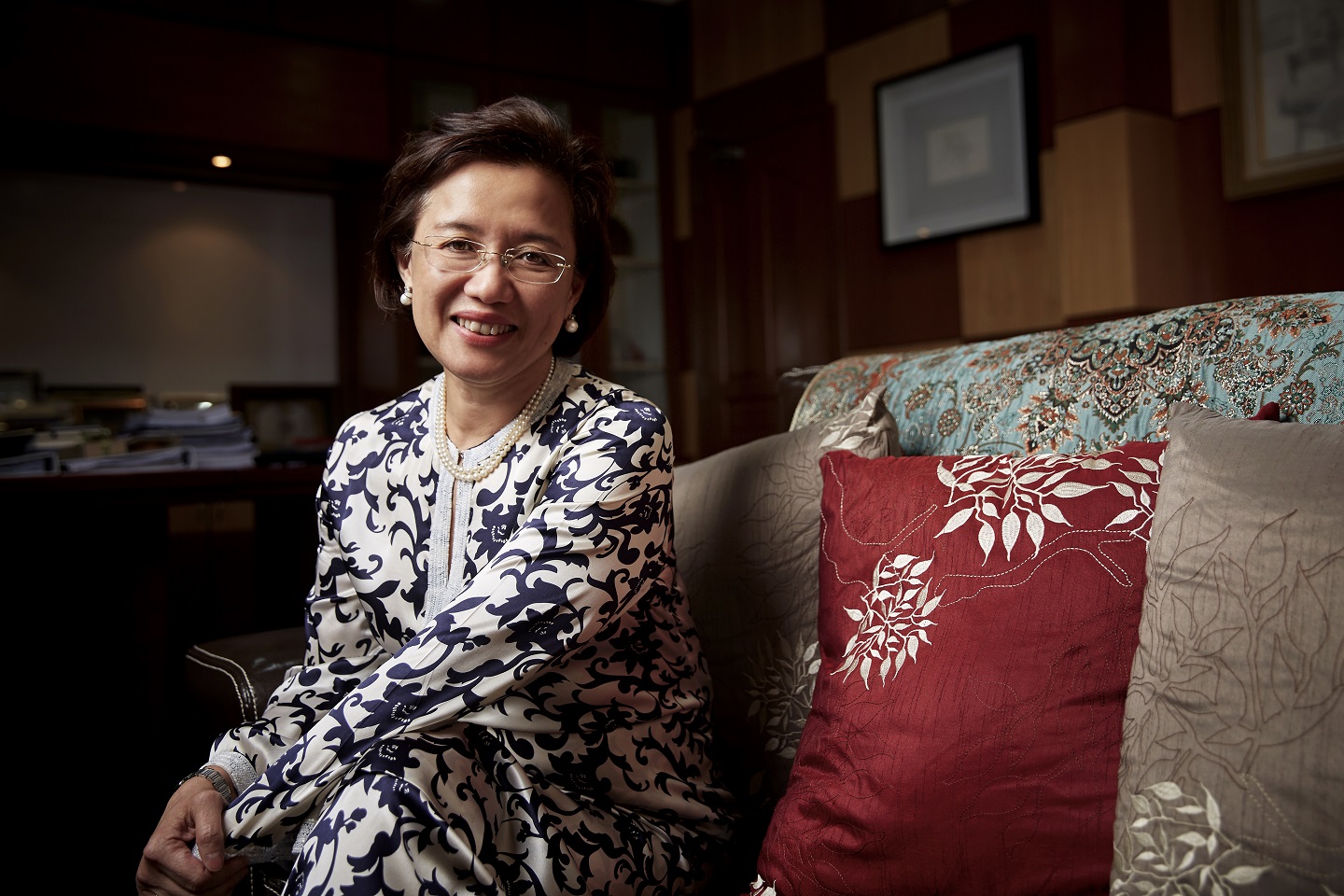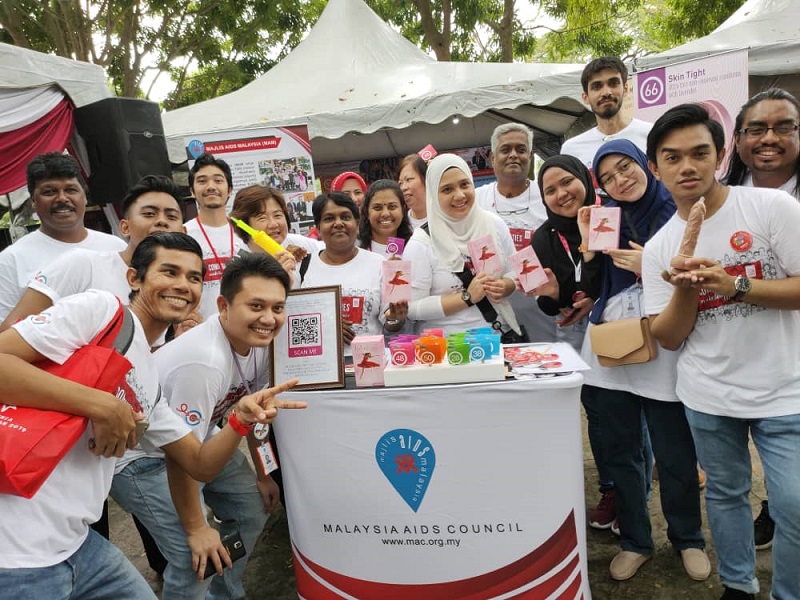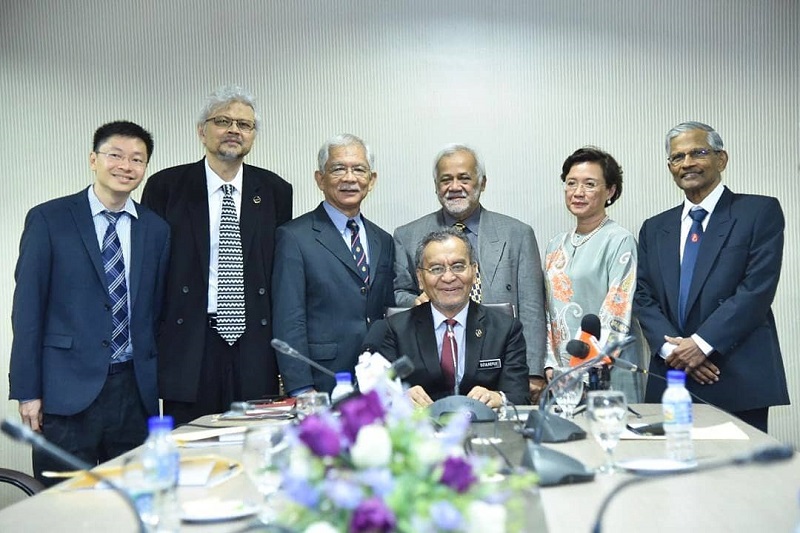
Malaysian AIDS Foundation president Prof Datuk Adeeba Kamarulzaman (Photography by SooPhye)
From the time the Human Immunodeficiency Virus was identified in 1981, it has captured our imagination like no other disease because of its scale — very quickly, people were dying from AIDS and no one knew how to combat the spread of HIV or how to cure it. Fear of the unknown made ordinarily rational human beings react in ways that were unnecessarily discriminatory, but who could blame anyone when knowledge was so scarce? All we knew about HIV at one point was that it led to AIDS and that there was no treatment for it — a diagnosis then almost certainly meant death.
Today, however, while there remains no cure or vaccine for AIDS, an HIV diagnosis is nowhere close to as damning as it once was. By taking and staying on antiretroviral therapy as soon as possible after diagnosis, people with HIV can live long and healthy lives and prevent transmitting the virus to their sexual partners. In addition, there are effective methods to prevent transmission through sex or drug use, including pre-exposure prophylaxis (PrEP) and clean needles and syringes.
Malaysia has not been spared from what is commonly acknowledged as one of humankind’s deadliest and most persistent epidemics. HIV was first detected here in 1986 and we are ranked the seventh highest in adult prevalence of HIV/AIDS in Asia after Thailand, Papua New Guinea, Myanmar, Cambodia, Vietnam and Indonesia, with a 0.45% prevalence rate. According to the United Nations, Malaysia was one of the 10 countries which together accounted for over 95% of all new HIV infections in Asia-Pacific in 2016.
The news is not all bad, though. Last year, Malaysia became the first country in the World Health Organization (WHO) Western Pacific Region to be certified as having eliminated mother-to-child transmission of HIV. Additionally, since 2006, the first line of highly active antiretroviral therapy has been provided for free in government hospitals. HIV Connect, a self-paced, online learning platform that is designed for primary care physicians and other healthcare practitioners in Malaysia, was launched in September last year. A joint effort between the Malaysian AIDS Foundation (MAF) and the Malaysian Society for HIV Medicine, the platform supports doctors in the care and management of HIV/AIDS patients.
Prof Datuk Adeeba Kamarulzaman, the dean of Universiti Malaya’s Faculty of Medicine and the incoming president of the International AIDS Society, is at the forefront of HIV/AIDS research in Malaysia. To appreciate the honour that comes with the IAS appointment, one need only look at who held it previously: Nobel Prize winner Françoise Barré-Sinoussi, who is credited with discovering the virus; Helen Gayle, who served as chair of the Obama administration’s advisory council on HIV/AIDS; and Linda-Gail Bekker, president and CEO of the Desmond Tutu HIV Foundation.
Headquartered in Geneva, Switzerland, the IAS leads collective action on every front of the global HIV response through its membership base, scientific authority and convening power. It is the steward of the world’s most prestigious HIV conferences, which have established a gold-standard meeting that brings together the world’s top scientists, civil society members and policymakers to jointly discuss the fight against HIV. This is a voluntary role alongside the work Adeeba already does as a medical professional, researcher and MAF president.
“I think optics-wise, an Asian Muslim woman in this position is very important,” she says proudly. “In the world of HIV, we are very cognisant of all this and very respectful of diversity — it’s a principle of how we work on a global level. We always ensure we work with people living with HIV and there is balance in terms of gender, geography and sexual orientation in whatever we do — whether it is committees or symposia panels and speakers. I am following in the footsteps of giants, truly, because all of the previous presidents are real stars in the world of HIV.”
As it turns out, her appointment was announced two years ago but she credits a friend’s “reminder” on Twitter after a recent conference for the sudden outburst of attention. Adeeba formally begins her tenure as IAS president in July next year. “Social media really caused the news to properly break this year,” she says shyly. “But what has already happened, even before I become president, is increased attention on the nature of the epidemic here in Asia, which is something I hope to also focus on during my presidency.”
Traditionally, Africa has been the epicentre of HIV/AIDS research because of the staggering nature of the pandemic there — it is a major public health concern and cause of death in many parts of the continent. Although Africa is home to about 15.2% of the world’s population, more than two-thirds of the total infected worldwide — 35 million — were Africans, of whom 15 million have already died, according to a 2018 WHO report. While it is perfectly understandable for Africa to be the focus of the research, the growing number in this part of the world also needs addressing, especially since the nature of transmission and the environments are different. Public health issues vary from country to country, and their specific needs and solutions are not the same.
malaysian_aids_counil.jpg

“In Malaysia, the most urgent need is to address the rising rate of infection among the young, especially gay men,” Adeeba explains. “We’ve done well in reducing infection among intravenous drug users, from a peak of 5,000 new infections per year in the late 1990s to just 300 last year. We did that by introducing the then very unpopular needle and syringe exchange programme — which goes to prove that if you base your policies on evidence and science, it works. Something I’m really advocating for now is a more humane and effective drug policy — instead of locking people up for using drugs, we need to provide them with counselling, support and treatment. Drug use and addiction is a health and social issue, and fortunately, we are starting to gain traction.”
One of the major donors to HIV and AIDS research in Malaysia is Geneva-based international financing and partnership organisation The Global Fund, whose objectives are to attract, leverage and invest additional resources to end tuberculosis, malaria as well as AIDS, which supports the attainment of the UN’s Sustainable Development Goals. The Malaysian AIDS Council, of which Adeeba is vice-president, works together with the Ministry of Health as well as other corporate donors to implement various programmes relating to prevention strategies, advocacy and support for people living with HIV.
These funds also allow Adeeba and her team to tackle the HIV/AIDS issues that are unique to Malaysia and identify targeted solutions. “From a clinical point of view, Professor Raja Iskandar Shah Raja Azwa is doing research on how to scale up PrEP to prevent infection, and Dr Reena Rajasuriar is looking at HIV, ageing and the immune response to HIV. My own research looks at drug use, tuberculosis, prisons and drug policies. Another team is looking at MSM (men who have sex with men), transgender people and the issues around HIV testing and treatment in what is actually a very tough environment.”
A multi-pronged approach from both the public and NGO sectors is key to UNAIDS’ goal to end the AIDS pandemic by 2030. Communication is also imperative because people need to know if they are at risk, where to get diagnosed and how to access medication as soon as possible. “Technology is a huge tool that we can rely on to communicate how you can get tested and where you can seek treatment. Gone are the days when we had to go to places in buses and talk to people about condoms. Now, we can provide so much more targeted information, thanks to social media,” Adeeba points out. And the message? Treatment is available and so effective that when your viral load is adequately suppressed, you cannot transmit the virus to sexual partners or babies.
Many people, affected by HIV or otherwise, are not aware of this fact. “That’s how effective treatment is! And this is why we are really pushing for everyone to go on treatment as soon as they are diagnosed because that’s where the goal to end AIDS comes from,” Adeeba says emphatically. “If you treat as many people as possible, you don’t get the onward transmission. And on top of that, when you give PrEP to people who are at risk, you slowly get to reduce it to a minimum. As long as we don’t have a cure or a vaccine, the virus will always be there. But when you are taking antiretroviral drugs, remaining on treatment effectively and your viral load is so low that it is undetectable, then it cannot be transmitted. Our mantra is ‘U equals U’, which means undetectable = untransmissable, and we are really pushing that message.”
With more communication and understanding comes a reduction in stigma, which remains a major issue as there is a proven cyclical relationship between it and HIV; people who experience this bias are marginalised and made more vulnerable, and those living with the virus are more prone to experiencing discrimination. This could be because HIV is seen as self-inflicted as opposed to cancer, for example, which is viewed through a much more compassionate lens. However, adopting a human-rights approach to HIV and AIDS is in the best interests of public health and key to eradicating prejudice and intolerance.
“Whether perceived or otherwise, the shame that affects those who think they have been infected makes them afraid to come forward. We want to reach out to these people so they know where to go for tests and treatment. At present, the big gaps are in the legal system — as long as there are laws that criminalise same-sex relations and drug use, the stigma will remain,” Adeeba explains. “Even at workplaces, it’s not compulsory to declare if you are HIV positive but companies that do pre-employment testing will find a reason to not hire you.”
adeeba_majlis_penasihat.jpg

To that end, the MAF has commissioned a law firm to look into legislation to counter this with support from the Ministry of Human Resources, and a joint grant with Yale University has been submitted to the US National Institute of Health to examine the issue of stigma among healthcare workers.
On a global level, the HIV/AIDS epidemic has the support of some of the world’s most famous personalities: British pop and rock icon Sir Elton John, the late Dame Elizabeth Taylor, comedian and talk show host Ellen DeGeneres as well as singers Alicia Keys, U2 lead singer Bono and Lady Gaga. They are among a slew of celebrity advocates whose endorsement has channelled thousands of dollars into research that has brought us to the advancements of today. This has also caused a change in perception, at least in the West — Freddie Mercury died of AIDS in 1991, the day after he publicly admitted to it after much hesitance, while Queer Eye star Jonathan Van Ness, who went public about his diagnosis in a recent book, continues to live a conceivably normal and healthy life.
“It’s not even four decades and we know so much about HIV already. Who would have thought that we could even talk about ending AIDS by 2030?” Adeeba marvels. “I think the unique thing about the HIV response that other disease groups are just starting to learn is this: the effectiveness of the response is a result of multi-sectoral participation. It’s not just doctors dealing with this but also people living with HIV themselves, groups of gay men, health workers, researchers and other advocates. That has helped shape policies and move things faster and in a more practical way than if you only had doctors talking about it. This is something advocates for other disease groups are slowly starting to learn … multi-sectoral participation is actually a hallmark of the HIV response, which makes more sense than just doctors telling you what to do.”
This ties in with the theme of this year’s World AIDS Day, celebrated annually on Dec 1 — communities make the difference. It recognises the essential role that they have played and continue to play in AIDS response at international, national and local levels. World AIDS Day offers an important platform to highlight the role of communities when reduced funding and a shrinking space for civil society are putting the sustainability of services and advocacy eff orts in jeopardy.
“International AIDS Day was started many years ago and it gave rise to important symbols like the red ribbon, which has become a great branding tool for the HIV movement.” Adeeba says. “What it does is to refocus global attention on the epidemic, especially now when, more than ever, we have all the tools to reverse the devastation caused by HIV and AIDS. What we lack is the political will and focus to execute and implement what we know will work.
“The theme this year, based on the idea of community, is important because where we have seen examples of success, whether in rural Africa or urban Sydney, it is always about various stakeholders coming together and never just about governments doing the work. And where you have communities that are involved, you find communities that are respected. In the end, regardless of your gender preference or if you have HIV or use drugs, you are, at the core of it, a human being. Looking at HIV and AIDS from that viewpoint creates the possibility of a more cohesive, communal and compassionate response that is also more effective,” she adds.
Incidentally, Adeeba was a medical student in Australia where she was involved in a landmark clinical trial for HIV drugs in 1994. She returned home to Kuala Lumpur and joined Universiti Malaya’s infectious diseases unit, much to her mother’s chagrin. “My mother said, ‘I didn’t send you overseas for you to come back and do this AIDS research business.’ I think she’s secretly proud of me now, though,” Adeeba laughs.
“As part of infectious diseases, we look after community diseases like dengue, typhoid and tuberculosis, for example, and then there are hospital infections, and then there is HIV/AIDS. I was also involved in the Nipah/JE epidemic, which was very scary because people died so quickly after diagnosis. I was pregnant at the time and my husband was concerned if I would be okay — we knew so little about how infectious it was. It was frightening because patients were dying in front of our eyes … we were wheeling them into intensive care within hours of their coming in with headache and fever,” she recalls.
Adeeba notes that AIDS has the same visual impact — the effects of rapid weight loss, sunken eyes and ugly sores from Kaposi’s sarcoma are jarring and distressing. But in a way, that sort of powerful imagery adds to the sense of urgency to find a cure, no matter how hard it seems. And with HIV and AIDS, the task seems Sisyphean as the challenges are unceasing. Thankfully, Adeeba considers herself the glass half-full sort and can remain sanguine because of her training as a doctor — you cannot get personal with the patients who die because it is the big picture that you need to keep your focus on.
“Every little win gives me the buzz to continue,” Adeeba smiles. “The issues are huge. And one of the criticisms of the lofty goal of ending AIDS is that it may not be attainable — people will become blasé about it and it sends the message that it’s no longer a problem and no one will fund it anymore. That
doesn’t faze me as I find it so exciting to be part of a global movement doing something so meaningful. I believe every little win, no matter how small, is still important.”
This story first appeared on Dec 2, 2019 in The Edge Malaysia.


